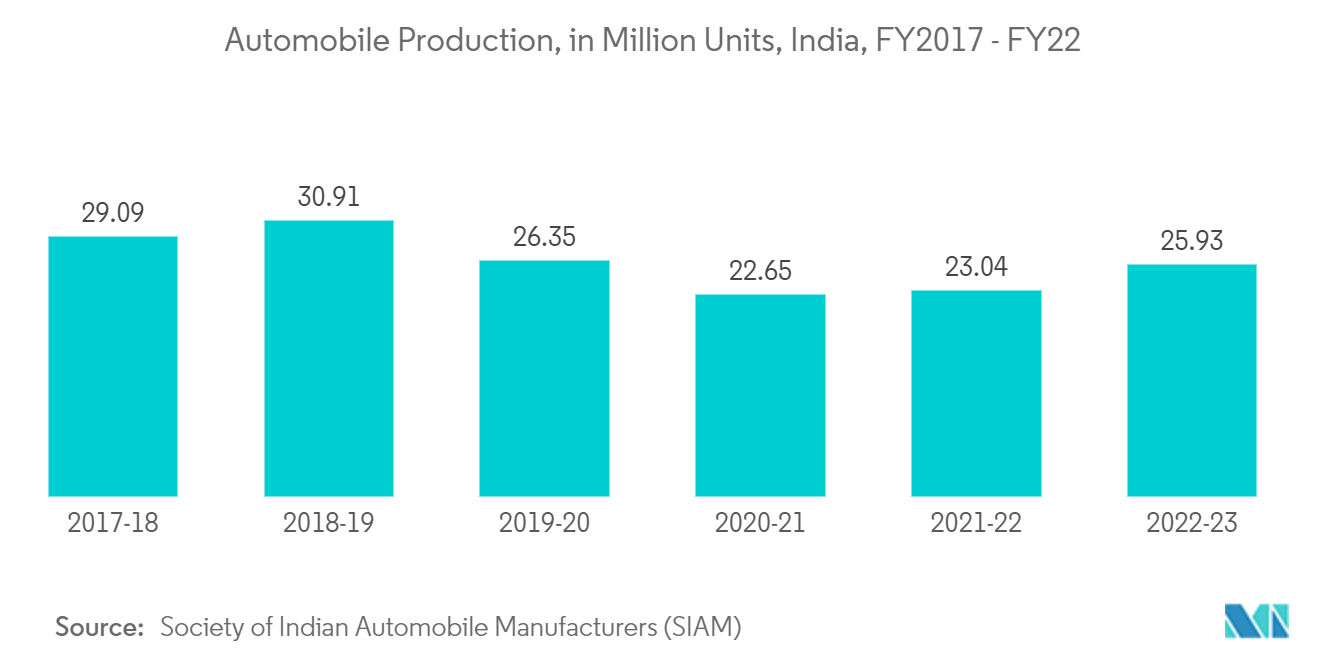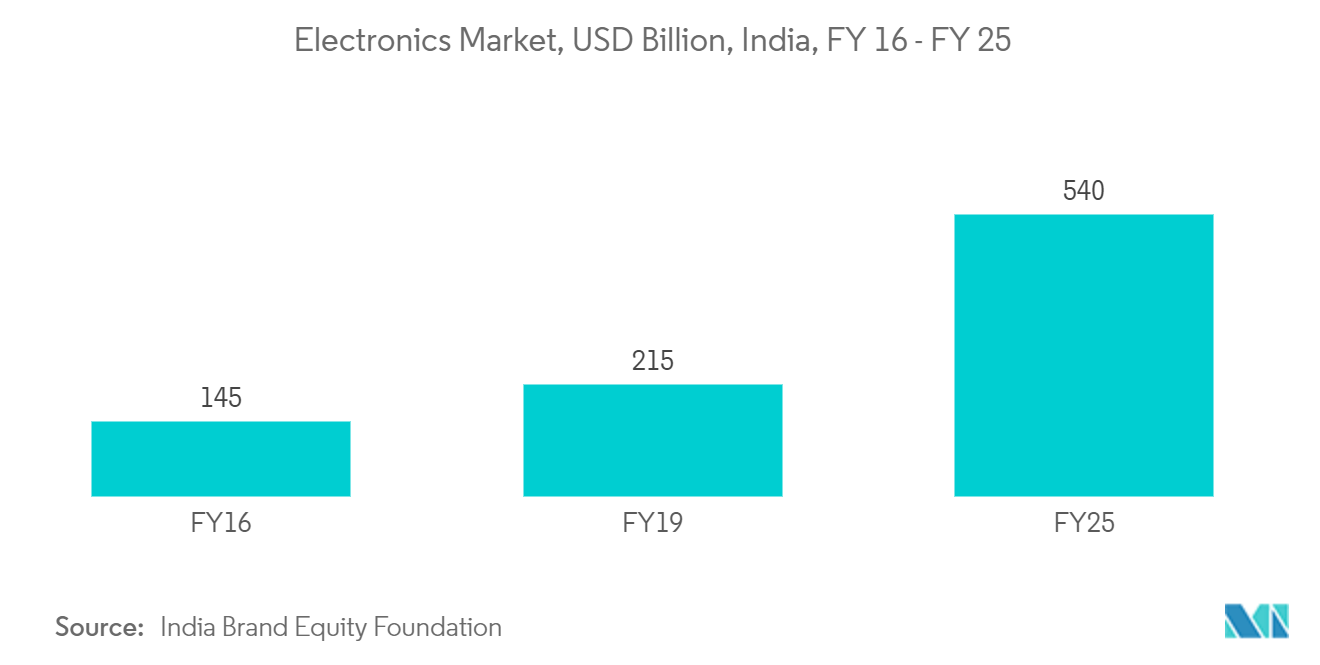Market Trends of India Precipitated Silica Industry
Automotive Industry to Dominate the Market
- Precipitated Silica is widely used as a reinforcing filler in tires. It helps improve tire traction, grip, and overall performance by enhancing wear resistance and wet grips. The tire market is expanding due to increasing vehicle production and demand. As a result, the demand for precipitated silica is also growing.
- According to the Automotive Tyre Manufacturers Association, 41 tire-producing companies in India have over 62 manufacturing plants. At AMTA Partners' Summit 2023, the association stated that tire exports from India increased by 50% in FY22 and will likely close the ongoing financial year with nearly 15% growth.
- In the period of April-December FY23, the exports were INR 17,816 crore (~USD 2.17 billion), an increase of 15% as against INR 15,507 crore (~USD 1.89 billion) in the same period a year ago. The main reason for the growth of the Indian tire industry is the consistent supply chain during the pandemic and current geo-political concerns.
- Moreover, the tire industry in India has completed an investment of over INR 35,000 crore (~USD 4.26 billion) in new capacity creation and debottlenecking in the last three years to meet the growing needs.
- The country is also focusing on achieving self-sufficiency in rubber production. More than 1.65 crore rubber plants have been planted in the Northeastern states under the North East Mission of Tyre Industry for Rubber Augmentation (NE-MI-TRA). The project envisages developing 2,00,000 hectares of rubber plantation in northeastern states and West Bengal over a period of 5 years, involving an outlay of INR 1,110 crore (~USD 0.14 billion).
- The Indian automobile industry's growth and performance have significant implications for the demand and usage of precipitated silica. The industry's expansion signifies increased production and sales of vehicles, which directly influences the need for various automotive components, including tires, coatings, and adhesives, where precipitated silica finds extensive application.
- According to the Society of Indian Automobile Manufacturers (SIAM), passenger vehicle production in the country reached 45,78,639 units in 2022-23 from 36,50,698 units in 2021-22, an increase of around 25.41%.
- Similarly, commercial vehicle sales in the country reached 10,35,626 units in 2022-23 from 8,05,527 units in 2021-22, a massive increase of around 28.56%. The rising logistics and passenger transportation industries are driving up demand for commercial vehicles.
- In December 2022, the total production of passenger vehicles, three-wheelers, two-wheelers, and quadricycles was 1,557,238 units.
- The above facts and factors suggest a positive correlation between the growth of the Indian automobile industry, the tire industry, and the demand for precipitated silica.

Growth in Electronics Industry
- In electronics, precipitated silica is used in display devices, watches, semiconductors, and cameras to absorb moisture in products. It is also utilized in adhesives and sealants used in the electronics industry. It acts as a reinforcing filler, improving the strength and resistance to moisture, temperature, and mechanical stresses.
- Moreover, precipitated silica is a key component of battery separators used in lead-acid batteries. Precipitated silica enables microporous battery separators with good electrolyte wettability and low electrical resistance, which are critical to battery performance.
- India Brand Equity Foundation projects growth of the Indian electronics manufacturing industry to reach USD 520 billion by 2025 signifies substantial market potential. Electronic products, such as consumer electronics, telecommunications equipment, and automotive electronics, often utilize precipitated silica for various applications, including semiconductors.
- India's position as one of the largest consumer electronics markets in the Asia Pacific Region further enhances the prospects for precipitated silica. As the demand for electronic products is expected to rise to USD 400 billion by 2025, the need for high-quality materials like precipitated silica will also increase.
- The government's initiatives, such as 'Digital India' and 'Make in India', have promoted electronics manufacturing and created a favorable business environment. The simplified process of setting up manufacturing units in India, supported by policies like the FDI Policy for electronics manufacturing, encourages both domestic and foreign investments. This will establish more electronics manufacturing facilities, increasing the demand for precipitated silica as an essential material in electronic component production.
- The government's commitment to reaching USD 300 billion worth of electronics manufacturing and exports by 2025-26 demonstrates its dedication to fostering the industry's growth. This commitment aligns with the goal of making electronics goods amongst India's top-ranking exports by 2026.
- The Union Budget 2023-24 has allocated INR 16,549 crore (USD 2 billion) for the Ministry of Electronics and Information Technology, which is nearly 40% higher annually. The budget for FY23 allocated INR 14,300 crore (USD 1.73 billion) for the IT ministry.
- The projected growth of the Indian electronics manufacturing industry, supported by government initiatives, policies, and increased budget allocations, presents promising opportunities for precipitated silica.


